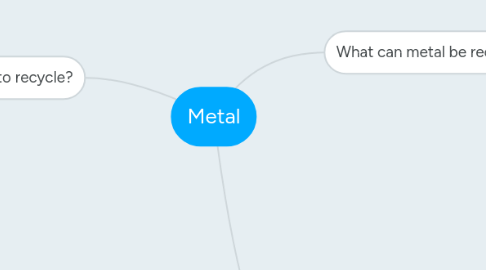Metal
Door bob nob


1. why is it good to recycle?
1.1. Recycling is very important as waste has a huge negative impact on the natural environment. Harmful chemicals and greenhouse gasses are released from rubbish in landfill sites. Recycling helps to reduce the pollution caused by waste. Habitat destruction and global warming are some the affects caused by deforestation.
2. What can metal be recycled into?
2.1. Most of the metal we throw away at home comes from food and drink cans and aerosols. Typically food cans are made from steel, which can be melted down and turned into new food cans. Drinks cans are generally thinner and lighter and made from aluminum, which can also be recycled very easily. Mining aluminum is a very energy-intensive and environmentally harmful process. That's why waste aluminum cans have a relatively high value and why recycling them is such a good thing to do.
2.2. Aluminium cans
2.2.1. The cans are shredded, and any coloured coating is removed. The shredded cans are then melted down, poured into casts and chilled. The metal is then rolled out, and made into new cans.
2.3. aerosols and steel
2.3.1. Aluminium and steel cans and aerosols are processed in England and Wales. They are shredded, melted and sold on to manufacturers. Aluminium can be used to make new cans, as well as for car and aeroplane construction. Steel cans and aerosols can be recycled into a variety of products including new cans, bicycle frames, pipes and train tracks. Both aluminium and steel can be recycled indefinitely without losing quality.
